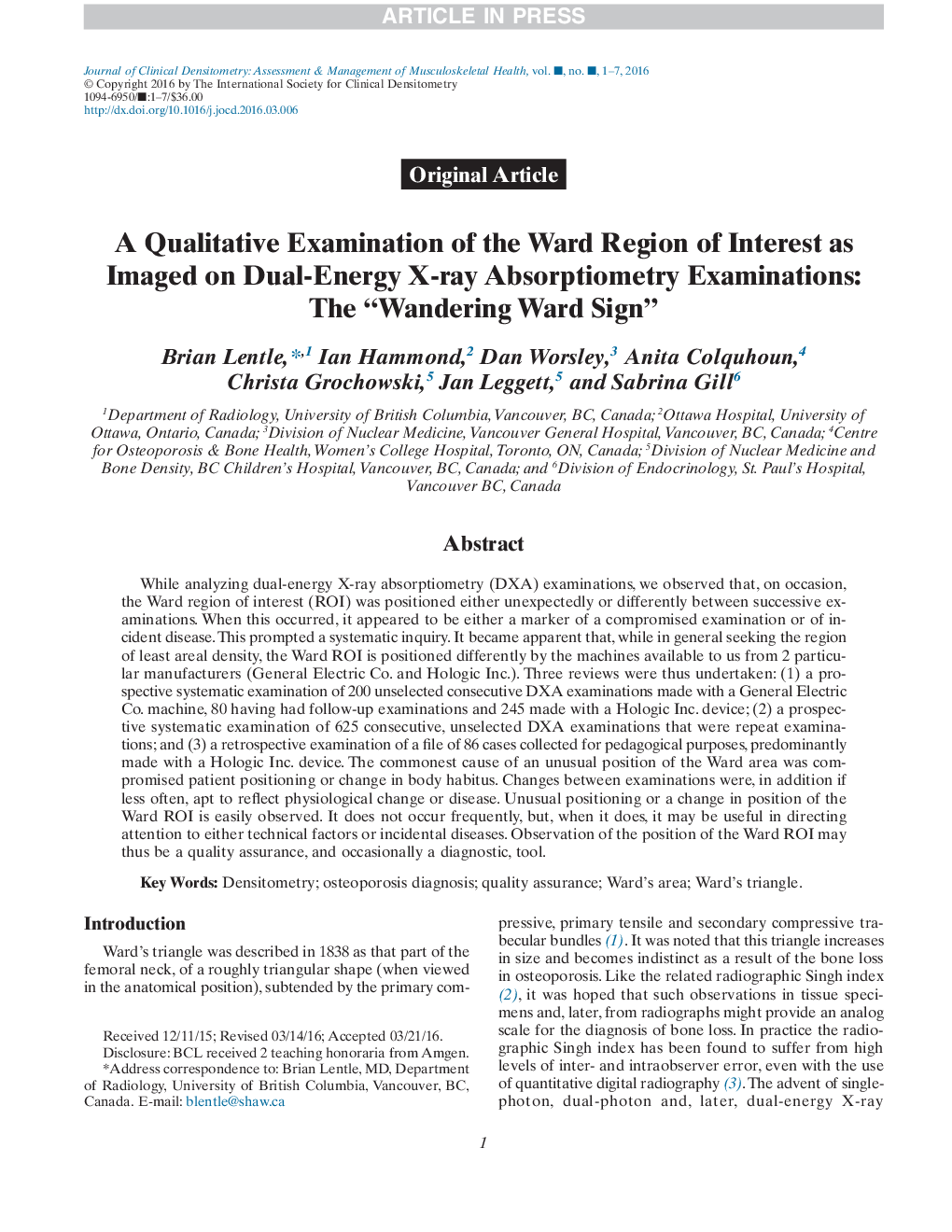| Article ID | Journal | Published Year | Pages | File Type |
|---|---|---|---|---|
| 8723175 | Journal of Clinical Densitometry | 2016 | 7 Pages |
Abstract
While analyzing dual-energy X-ray absorptiometry (DXA) examinations, we observed that, on occasion, the Ward region of interest (ROI) was positioned either unexpectedly or differently between successive examinations. When this occurred, it appeared to be either a marker of a compromised examination or of incident disease. This prompted a systematic inquiry. It became apparent that, while in general seeking the region of least areal density, the Ward ROI is positioned differently by the machines available to us from 2 particular manufacturers (General Electric Co. and Hologic Inc.). Three reviews were thus undertaken: (1) a prospective systematic examination of 200 unselected consecutive DXA examinations made with a General Electric Co. machine, 80 having had follow-up examinations and 245 made with a Hologic Inc. device; (2) a prospective systematic examination of 625 consecutive, unselected DXA examinations that were repeat examinations; and (3) a retrospective examination of a file of 86 cases collected for pedagogical purposes, predominantly made with a Hologic Inc. device. The commonest cause of an unusual position of the Ward area was compromised patient positioning or change in body habitus. Changes between examinations were, in addition if less often, apt to reflect physiological change or disease. Unusual positioning or a change in position of the Ward ROI is easily observed. It does not occur frequently, but, when it does, it may be useful in directing attention to either technical factors or incidental diseases. Observation of the position of the Ward ROI may thus be a quality assurance, and occasionally a diagnostic, tool.
Related Topics
Health Sciences
Medicine and Dentistry
Endocrinology, Diabetes and Metabolism
Authors
Brian Lentle, Ian Hammond, Dan Worsley, Anita Colquhoun, Christa Grochowski, Jan Leggett, Sabrina Gill,
